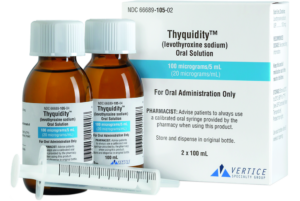Metformin
Metformin, a widely prescribed medication, is an essential cornerstone in the management of type 2 diabetes mellitus. Known for its efficacy and safety profile, metformin has also shown promise in various other medical conditions beyond diabetes. In this article, we delve into the uses, dosages, and potential side effects of metformin.
 Uses of Metformin
Uses of Metformin
Type 2 Diabetes Management: Metformin is primarily prescribed to lower blood sugar levels in individuals with type 2 diabetes. It works by increasing the sensitivity of cells to insulin and reducing the liver’s glucose production, ultimately leading to better blood sugar control.
Polycystic Ovary Syndrome (PCOS): Metformin can be helpful in managing the hormonal imbalances associated with PCOS. It helps regulate menstrual cycles and can assist in improving ovulation, thus aiding women with PCOS who are trying to conceive.
Gestational Diabetes: In some cases of gestational diabetes (diabetes during pregnancy), metformin may be used to control blood sugar levels when dietary and lifestyle interventions are insufficient.
Prediabetes: Metformin is sometimes prescribed to individuals with prediabetes to help prevent the progression to full-blown type 2 diabetes. It can be particularly beneficial for those with high risk factors.
Weight Management: Although not primarily a weight-loss medication, metformin can lead to modest weight loss in individuals with diabetes due to its effects on appetite and glucose metabolism.
Anti-Aging Research: Recent studies have suggested that metformin might have potential anti-aging properties and could extend lifespan. However, more research is needed in this area.
Brands Metformin is available under various brand names depending on the country and region. Here are some common brand names for metformin:
- Glucophage: This is one of the most well-known brand names for metformin. It comes in immediate-release and extended-release formulations.
- Fortamet: This is an extended-release formulation of metformin.
- Glumetza: Another extended-release version of metformin.
- Riomet: This is a liquid form of metformin, which might be more suitable for individuals who have difficulty swallowing tablets.
- Diaformin: This is a brand name used in some countries for metformin.
- Metaglip: This is a combination medication that contains metformin and glipizide, another medication used to treat diabetes.
- Janumet: This is a combination medication that includes sitagliptin and metformin, both used to manage type 2 diabetes.
- Jentadueto: Similar to Janumet, this is a combination of linagliptin and metformin.
- Synjardy: This is a combination medication that contains empagliflozin and metformin.
It’s important to note that these brand names might vary depending on your location and the pharmaceutical companies that manufacture and distribute the medication. Always consult your healthcare provider or pharmacist to confirm the specific brand names available in your area.
Dosage and Administration
Metformin is available in various formulations, primarily immediate-release (IR) and extended-release (ER) forms. The immediate-release form is designed to be released rapidly into the bloodstream, while the extended-release form gradually releases the medication over a longer period, allowing for once-daily dosing.
Starting Dosage The starting dosage of metformin depends on several factors, including the patient’s medical condition, kidney function, and any other medications they are taking. For most individuals, the typical starting dose is 500 mg to 850 mg taken once daily with meals, regardless of the time of day. This helps reduce the likelihood of gastrointestinal side effects, which are common when starting metformin.
Titration and Maintenance The dosage of metformin is often gradually increased to achieve optimal blood sugar control while minimizing side effects. The goal is to find the lowest effective dose that maintains stable blood glucose levels.
Immediate-Release Formulation: The dosage can be increased every one to two weeks by 500 mg or 850 mg, depending on the initial dose, until the desired blood sugar levels are achieved. The maximum recommended daily dose for the immediate-release form is typically 2,550 mg.
Extended-Release Formulation: The extended-release form of metformin allows for once-daily dosing. The starting dose is usually 500 mg to 1,000 mg taken with the evening meal. The dosage can be increased by 500 mg every one to two weeks as needed. The maximum recommended daily dose for the extended-release form is typically 2,000 mg.
Dosage Adjustments
Several factors can influence the need for dosage adjustments:
- Kidney Function: Metformin is primarily excreted through the kidneys. If kidney function is impaired, the dosage may need to be adjusted or the medication might need to be stopped to prevent the risk of lactic acidosis. Your healthcare provider will determine the appropriate dose based on your kidney function.
- Other Medications: Certain medications can interact with metformin, affecting its effectiveness or increasing the risk of side effects. Your healthcare provider will review your medication list and make necessary adjustments.
- Medical Conditions: If you develop new medical conditions or experience changes in your health status, your metformin dosage might need to be re-evaluated.
Monitoring
Regular monitoring of blood sugar levels is essential to assess the effectiveness of metformin therapy. Additionally, kidney function tests (serum creatinine and estimated glomerular filtration rate) are typically performed before starting metformin and periodically thereafter, especially in individuals with pre-existing kidney issues.
Conclusion
Metformin dosage is individualized based on factors such as the patient’s medical condition, kidney function, and response to the medication. Starting at a low dose and gradually titrating up helps minimize side effects while achieving optimal blood sugar control. Regular communication with your healthcare provider is crucial to ensure that your metformin dosage is appropriate for your specific needs and health circumstances. Never make changes to your medication regimen without consulting a healthcare professional.
Side Effects
Metformin is generally well-tolerated, but like any medication, it can have side effects. Common side effects include:
- Gastrointestinal Distress: Nausea, vomiting, diarrhea, and stomach upset are common when starting metformin. Taking it with food can help mitigate these effects.
- Vitamin B12 Deficiency: Long-term use of metformin can lead to decreased absorption of vitamin B12, potentially causing anemia and neurological issues. Regular monitoring and supplementation may be necessary.
- Lactic Acidosis (Rare): While extremely rare, metformin can lead to a serious condition called lactic acidosis, characterized by high levels of lactic acid in the blood. This risk is higher in individuals with kidney or liver problems.
- Hypoglycemia (Rare): Metformin is not known to cause low blood sugar by itself, but when used in combination with other diabetes medications, it could contribute to hypoglycemia.
- Gastrointestinal Issues: Some individuals might experience persistent gastrointestinal symptoms that do not resolve with time, leading to discontinuation of the medication.
Precautions and Considerations
- Inform your healthcare provider about any pre-existing medical conditions, especially kidney or liver problems.
- Metformin may interact with other medications, so it’s crucial to provide a comprehensive list of all the medications you are taking.
- Regular monitoring of kidney function is essential during metformin therapy.
- Do not self-adjust the dosage or discontinue the medication without consulting your healthcare provider.
Conclusion
Metformin is a valuable medication with a broad spectrum of uses, primarily in the management of type 2 diabetes. Its potential benefits extend beyond glycemic control, encompassing conditions like PCOS and gestational diabetes. While generally safe, metformin does carry potential side effects, making it important to use under proper medical supervision. Always consult your healthcare provider to determine the appropriate dosage and address any concerns you may have.
Medarchive.us does not assume any responsibility for any aspect of healthcare administered with the aid of materials provided. The information contained herein is not intended to cover all possible uses, directions, precautions, warnings, drug interactions, allergic reactions, or adverse effects. The information provided on our Web or Videos does not endorse drugs, diagnose patients, or recommend therapy. If you have questions about the medication you are taking or want to start as treatment, check with your doctor or medical health care provider.







